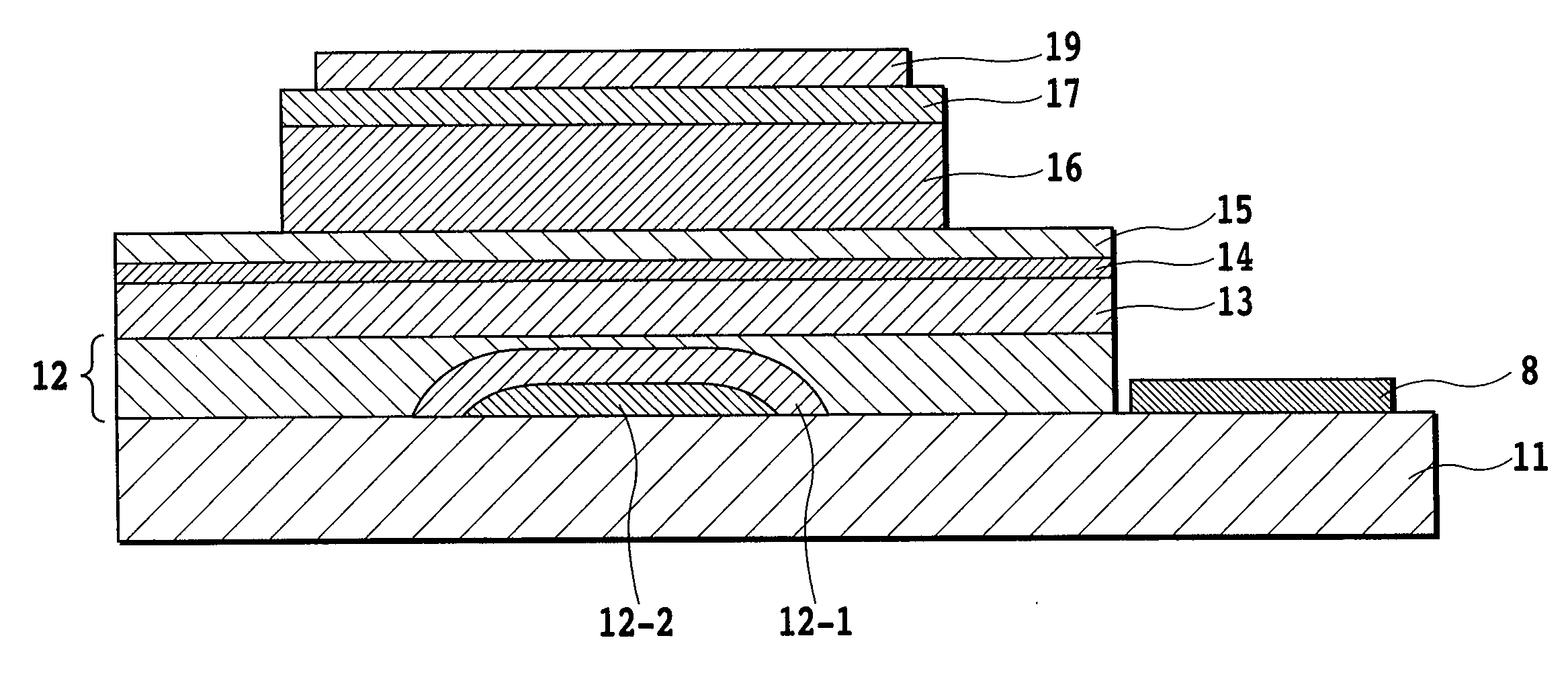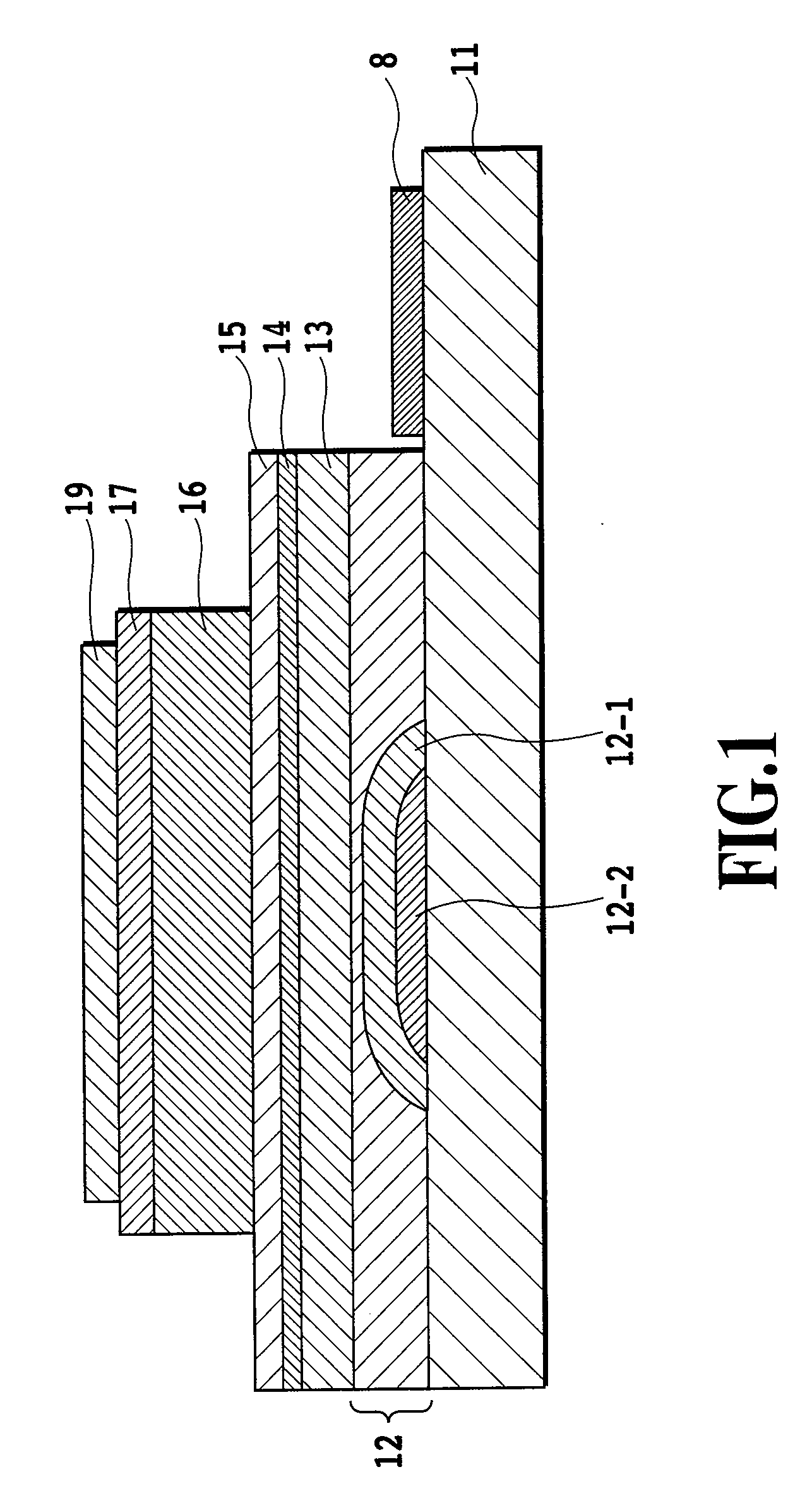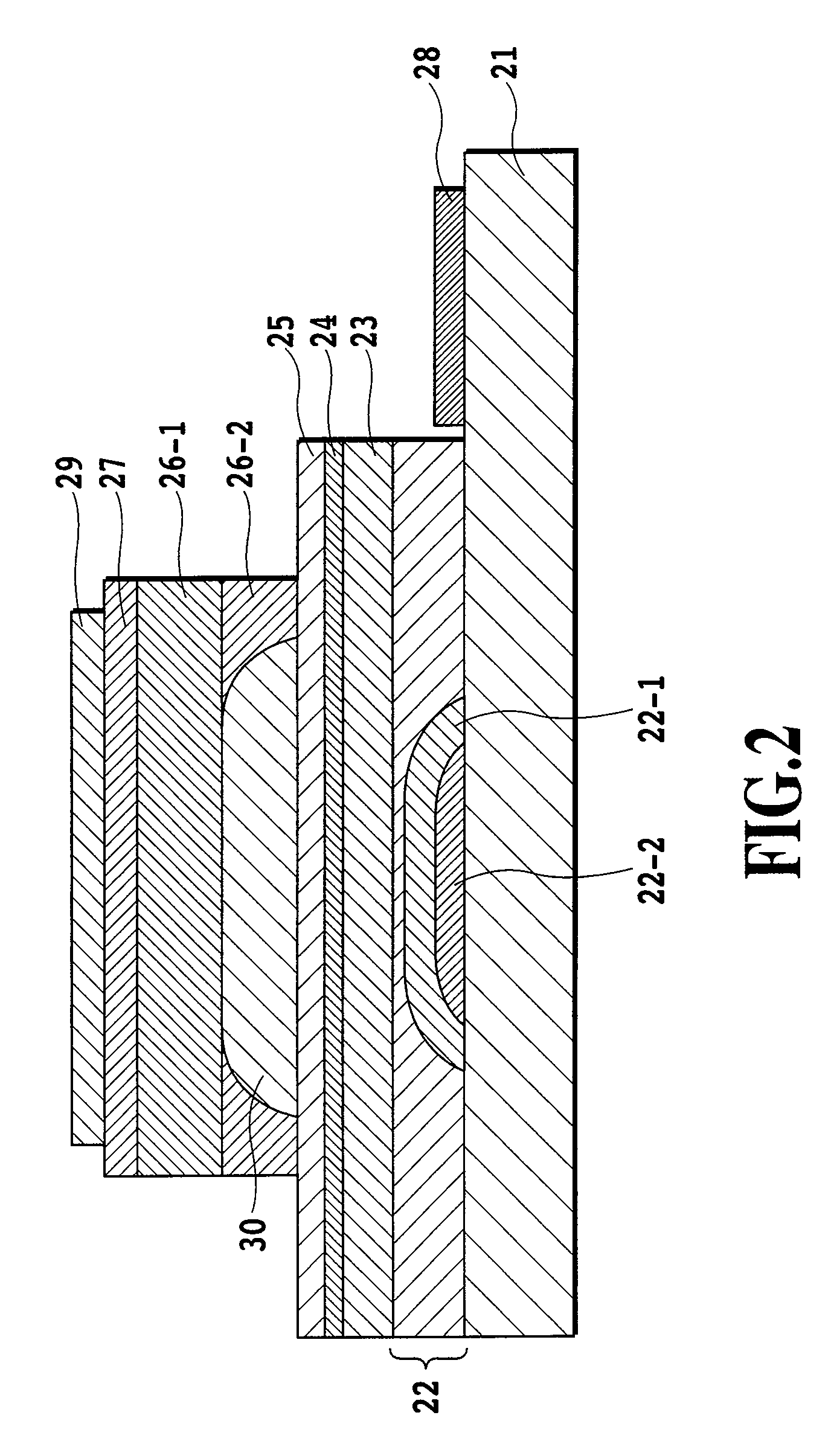Avalanche photodiode
a photodiode and avalanche technology, applied in the field of ultrafast avalanche photodiodes, can solve the problems of increasing the dark current around the junction periphery of the device, affecting the production cost of the technique, and affecting the production efficiency of the technique, so as to achieve low dark current and high control
- Summary
- Abstract
- Description
- Claims
- Application Information
AI Technical Summary
Benefits of technology
Problems solved by technology
Method used
Image
Examples
first embodiment
[0024]FIG. 1 is a structural drawing of an APD in accordance with a first embodiment of the present invention. On an n-type InP electrode layer 11, an InP buffer layer 12, an InP avalanche multiplication layer 13, an InP electric field control layer 14, and an InGaAsP bandgap graded layer 15 are formed in order. Furthermore, on the InGaAsP bandgap graded layer 15, a p-type
[0025]InGaAs optical absorption layer 16 in a mesa structure, a p-type InGaAsP electrode layer 17, and a metal electrode 18 are provided. On the n-type InP electrode layer 11, a metal electrode 19 is also provided.
[0026]In addition, n-type InP doping regions 12-1 and 12-2 are formed locally within the InP buffer layer 12. The n-type InP doping region 12-2 is included within the n-type InP doping region 12-1. Furthermore, the n-type InP doping regions 12-1 and 12-2 have different doping concentrations. The structure and the fabrication method will be explained in detail in the later section. As will hereinafter be e...
second embodiment
[0035]FIG. 2 is a structural drawing of an APD in accordance with a second embodiment of the present invention. On an n-type InP electrode layer 21, an InP buffer layer 22, an InP avalanche multiplication layer 23, an InP electric field control layer 24, and an InGaAsP bandgap graded layer 25 are sequentially formed. Furthermore, on the InGaAsP bandgap graded layer 25, an optical absorption layer and others which make up a mesa structure are formed. What is characteristic of the present invention is the provision of a second optical absorption layer.
[0036]To be more specific, on the InGaAsP bandgap graded layer 25, a low-concentration second InGaAs optical absorption layer 26-2, which is depleted in an operating state, is firstly formed. On the top of this, as described in the first embodiment, a first p-type InGaAs optical absorption layer 26-1, a p-type InGaAsP electrode layer 27, and a metal electrode 29 are provided. On the top of the n-type InP electrode layer 21, a metal elect...
PUM
 Login to View More
Login to View More Abstract
Description
Claims
Application Information
 Login to View More
Login to View More - R&D
- Intellectual Property
- Life Sciences
- Materials
- Tech Scout
- Unparalleled Data Quality
- Higher Quality Content
- 60% Fewer Hallucinations
Browse by: Latest US Patents, China's latest patents, Technical Efficacy Thesaurus, Application Domain, Technology Topic, Popular Technical Reports.
© 2025 PatSnap. All rights reserved.Legal|Privacy policy|Modern Slavery Act Transparency Statement|Sitemap|About US| Contact US: help@patsnap.com



